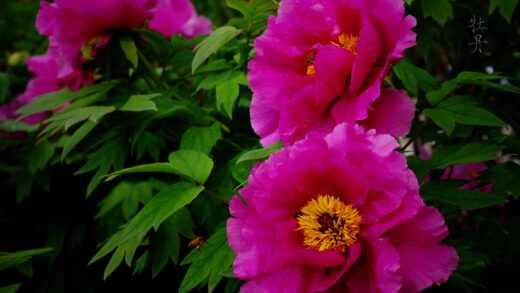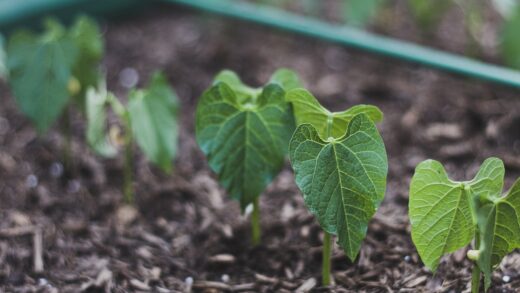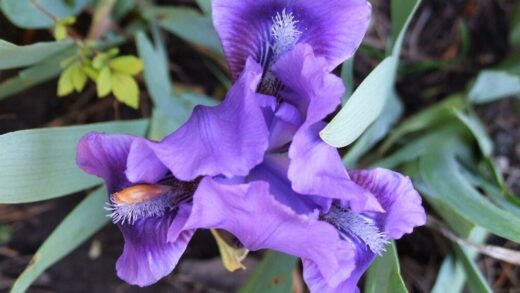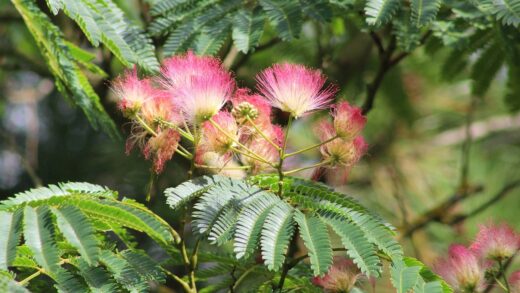Arum maculatum, commonly known as cuckoo-pint or lords-and-ladies, is a fascinating and visually striking plant native to woodland and shaded environments across Europe. Its unique appearance, characterized by a distinctive spathe and spadix, followed by a cluster of vibrant red berries, makes it a captivating addition to any shade garden or naturalistic planting scheme. Proper care is essential not only for the health and vigor of the plant but also to appreciate its full, unique life cycle. Understanding its natural habitat and growth patterns is the first step toward successfully cultivating this intriguing species, ensuring it thrives and returns year after year with its characteristic charm.
The plant’s life cycle is a key aspect to grasp for effective care. It emerges in early spring, producing large, arrow-shaped leaves that are often adorned with dark purple or black spots, adding to its ornamental value. Shortly after the foliage appears, the remarkable inflorescence develops, which consists of a pale green, hood-like spathe partially enclosing a purplish-brown central spike called the spadix. This structure plays a crucial role in pollination by trapping small insects. Following pollination, the leaves and spathe wither away by mid-summer, leaving behind a stalk of initially green, then brilliant red, berries that provide a splash of color in the late summer and autumn landscape.
Cultivating cuckoo-pint requires an appreciation for its toxicity. All parts of the plant, including the leaves, flowers, and especially the attractive berries, contain calcium oxalate crystals, which are toxic if ingested and can cause severe irritation to the skin and mucous membranes. Therefore, it is crucial to handle the plant with care, preferably wearing gloves, and to site it in an area where it is not accessible to children or pets who might be tempted by the colorful berries. This precautionary approach ensures that the plant can be enjoyed for its beauty without posing a risk to the household.
Despite its toxicity, Arum maculatum has a rich history in folklore and traditional medicine, although its use is now strongly discouraged due to the inherent dangers. In the garden setting, its primary role is ornamental, where it excels in woodland gardens, under the canopy of deciduous trees, or in shaded borders. Its ability to thrive in low-light conditions where many other plants struggle makes it a valuable choice for difficult-to-fill garden niches. By providing the right conditions, gardeners can enjoy the full, dramatic display this plant offers throughout its seasonal transformations.
Understanding the natural habitat
To provide the best care for cuckoo-pint, it is essential to replicate its native growing conditions as closely as possible. This plant is a quintessential woodland species, typically found on the floor of deciduous forests where it benefits from the shelter and filtered light provided by the tree canopy. The soil in these environments is consistently moist, but not waterlogged, and is rich in organic matter from decaying leaves and other plant debris. This humus-rich soil provides the necessary nutrients and structure for the plant’s tuberous roots to establish and spread.
More articles on this topic
The light conditions of its natural habitat are a critical factor to emulate. In spring, before the deciduous trees fully leaf out, the plant receives a period of brighter, indirect sunlight which fuels its initial growth and flowering. As the tree canopy fills in, the plant is then plunged into deeper shade for the remainder of its active growing season, which protects its leaves from scorching. Recreating this dappled shade environment is key to its success in a garden setting, making it an ideal candidate for planting beneath trees or on the north side of structures.
The soil pH in its native woodlands tends to be neutral to slightly alkaline. Arum maculatum is adaptable to a range of soil types, including loamy, sandy, and clay soils, provided they are well-draining. Poor drainage can lead to tuber rot, which is one of the most common issues when cultivating this species. Therefore, amending heavy clay soils with organic matter like leaf mold or well-rotted compost is highly beneficial, as this improves both the soil structure and its nutrient content, mimicking the rich forest floor.
Another aspect of its natural environment is the seasonal moisture cycle. The soil remains consistently damp throughout the spring growing season, fueled by seasonal rains. As summer progresses and the plant enters its dormancy period after fruiting, the soil may become slightly drier, which the dormant tuber can tolerate. This cycle of spring moisture followed by a slightly drier summer dormancy is important to its long-term health and should be considered when planning an irrigation schedule in a garden environment.
Soil and location requirements
Choosing the correct location is the most critical decision when cultivating Arum maculatum. The ideal spot is one that offers partial to full shade, especially during the hottest part of the afternoon. A position under the canopy of large deciduous trees or shrubs is perfect, as this provides the dappled sunlight in spring and the deep shade in summer that the plant needs. Avoid planting it in areas that receive intense, direct sunlight, as this can lead to leaf scorch and stress the plant, hindering its growth and flowering potential.
More articles on this topic
The soil must be well-prepared to ensure the plant’s success. Cuckoo-pint thrives in soil that is rich in organic matter, fertile, and, most importantly, well-draining. Before planting, it is highly recommended to amend the soil with generous amounts of leaf mold, garden compost, or well-rotted manure. This not only enriches the soil with essential nutrients but also improves its structure, allowing for better moisture retention while preventing the waterlogging that can cause its tuberous roots to rot.
The depth at which the tubers are planted is also an important consideration. They should be planted at a depth of approximately 8 to 10 centimeters, with the growing point facing upwards. Planting too shallowly can expose the tuber to frost or physical damage, while planting too deeply can delay or prevent the emergence of foliage in the spring. Spacing the tubers about 20 to 30 centimeters apart will give them adequate room to develop and form a natural-looking colony over time.
Once planted, Arum maculatum is a relatively low-maintenance plant, provided it is in the right location. It generally does not require frequent intervention, as it is well-adapted to competing with other woodland plants. The key is to establish it in an environment that closely mirrors its native woodland home from the outset. Getting the location and soil conditions right at the planting stage will result in a healthy, self-sustaining plant that will reward the gardener with its unique beauty for years to come.
Watering and feeding throughout the seasons
Watering practices for Arum maculatum should be adapted to its active growth and dormant periods. During the spring, from the emergence of leaves until the plant begins to die back in early summer, the soil should be kept consistently moist. This is the period of most active growth, flowering, and energy storage for the following year, so a reliable water supply is crucial. It is best to water deeply and thoroughly when the top few centimeters of soil feel dry, ensuring the moisture penetrates down to the root zone.
As the plant enters its summer dormancy, typically after the berries have formed, its water requirements decrease significantly. The leaves will yellow and wither away, which is a natural part of its life cycle. During this time, irrigation should be reduced, allowing the soil to dry out slightly between waterings. The dormant tuber is susceptible to rot in overly wet conditions, so it is important to avoid excessive moisture throughout the summer and autumn months. In most climates with regular rainfall, supplemental watering may not be necessary at all during dormancy.
When it comes to feeding, cuckoo-pint benefits from an environment rich in organic matter rather than frequent applications of chemical fertilizers. The best approach is to provide a nutrient-rich foundation at the time of planting by incorporating plenty of compost or leaf mold into the soil. This slow-release source of nutrients will support the plant’s needs effectively. A top-dressing of organic matter each autumn will replenish the soil and provide the necessary fuel for the following spring’s growth.
If the soil is particularly poor, a light application of a balanced, slow-release granular fertilizer can be applied in early spring as the new growth emerges. However, this is often unnecessary if the soil has been properly amended with organic material. Over-fertilizing can lead to lush, weak foliage at the expense of flowering and can even damage the plant’s tuberous root system. The focus should always be on creating a healthy, humus-rich soil ecosystem rather than relying on intensive feeding schedules.
Managing dormancy and berry production
The dormancy period is a natural and essential phase in the life cycle of Arum maculatum. This period begins in the summer after the plant has flowered and the leaves start to yellow and die back. It is crucial for gardeners to recognize this as a normal process and not a sign of disease or distress. During dormancy, the plant’s energy is stored in the underground tuber, which allows it to survive the rest of the year and fuel the growth of the following spring.
Once the foliage has completely withered, it can be left in place to decompose naturally, adding to the organic matter in the soil, or it can be carefully removed for aesthetic reasons. The primary visual feature during this time is the stalk of bright red berries. These berries are a significant ornamental feature, providing a vibrant splash of color in the shaded garden when many other plants have finished blooming. They typically persist into the autumn months before eventually being consumed by birds or falling to the ground.
It is important to manage the area around the dormant plant with care. Avoid deep digging or cultivation near the tubers, as this can easily damage them. It is also a good time to apply a layer of mulch, such as leaf mold or composted bark, around the plant. This mulch will help to protect the dormant tuber from temperature extremes, conserve soil moisture, and suppress weed growth, ensuring the tuber remains undisturbed and healthy until it is ready to sprout again in the spring.
For those wishing to propagate the plant, the berries offer an opportunity. Each berry contains several seeds which can be collected once the berries are fully ripe and have softened. However, it is important to remember the toxicity of the berries and handle them with gloves. Propagating from seed can be a slow process, but it allows for the creation of new plants and the expansion of a garden colony. Alternatively, leaving the berries on the plant allows for natural dispersal by wildlife, which can lead to new seedlings emerging in the surrounding area over time.
Pests, diseases, and potential problems
Arum maculatum is a robust and resilient plant that is generally free from significant pest and disease problems, especially when grown in its preferred conditions. Its toxicity provides a natural defense against many common garden herbivores such as rabbits and deer, which tend to avoid it. However, there are a few issues that gardeners should be aware of in order to keep their plants healthy and thriving.
The most common pests that may affect cuckoo-pint are slugs and snails. These mollusks are particularly drawn to the lush, tender new foliage that emerges in the spring and can cause significant damage by chewing holes in the leaves. To manage them, it is advisable to use organic control methods such as beer traps, copper tape around planting areas, or encouraging natural predators like birds and hedgehogs. Regularly inspecting the plants during damp weather, when slugs and snails are most active, can help to catch infestations early.
In terms of diseases, the primary concern is root rot, which is almost always caused by poor drainage and waterlogged soil conditions. If a plant appears to be wilting or its leaves are yellowing prematurely during the active growing season, it may be a sign that the tuber is suffering from rot. To prevent this, ensure the plant is sited in a location with excellent drainage and be careful not to overwater, especially during its summer dormancy. Amending heavy soils with grit and organic matter is the best preventative measure against this issue.
Occasionally, fungal leaf spots or rust can appear on the foliage, particularly in humid or overcrowded conditions. These are generally minor issues that do not threaten the overall health of the plant. To manage fungal problems, ensure good air circulation around the plants by not overcrowding them. If infections occur, remove and dispose of the affected leaves promptly to prevent the spread of spores. In most cases, chemical fungicides are not necessary for a plant as resilient as Arum maculatum.


















